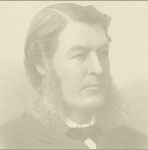

 |
Atlantic CanadaEuropeans were now fishing on the Atlantic Coast1, mainly along the coasts of Newfoundland, in the 15th and 16th centuries. Jacques Cartier had clearly put Prince Edward Island and Newfoundland on the map, as a result of his numerous expeditions. But it was Samuel de Champlain who marked the true beginning of French colonization in North America when he set up a colony in 1604 on Sainte-Croix Island, then moved to Port-Royal. The region was inhabited by Micmacs, and Newfoundland was inhabited by Inuits. In the 17th century, Acadia passed back and forth under the control of the French and the English. The English government changed Acadia’s name to Nova Scotia during that period. In 1713, Acadia and Newfoundland passed definitely into the hands of the English. France then concentrated on the development and colonization of Île Saint-Jean and Île Royale, and chose Louisbourg as the new capital. Even though Acadia, now Nova Scotia, was in its possession under the Treaty of Utrecht, England only founded Halifax in 1749. The British authorities took drastic action in 1755 by giving the fateful order of deportation. It is estimated that three-quarters of the Acadian population were deported to the Thirteen Colonies, part of them fled to Louisiana, or were sent back to France, or managed to escape to Canada. The Treaty of Paris in 1763 marked the end of the Seven Years’ War. The two French colonies, Île Royale and Île Saint-Jean, fell in 1758, putting an end to the French presence in all of New France. Only the islands of Saint-Pierre and Miquelon, south of Newfoundland, remained under French control. The American Revolution (or American War of Independence) brought an influx of Loyalist refugees into Nova Scotia and led, in 1784, to the establishment of two new colonies : New Brunswick and Cape Breton. Île Saint-Jean, separated from Nova Scotia in 1769, was renamed Prince Edward Island in 1799. The Charlottetown Conference of the Maritime provinces in 1864, though originally planned as a meeting between representatives from the Maritimes only, was the first step toward Confederation. It led to the creation, in 1867, of the Dominion of Canada made up of New Brunswick, Nova Scotia, and Québec and Ontario. Newfoundland and Prince Edward Island were also invited, but declined. Economic and political pressures pushed Prince Edward Island into Confederation in 1873. After two referendums, Newfoundland became a Canadian province on March 31, 1949. | ||||||||||
| Français |
Credits |
||